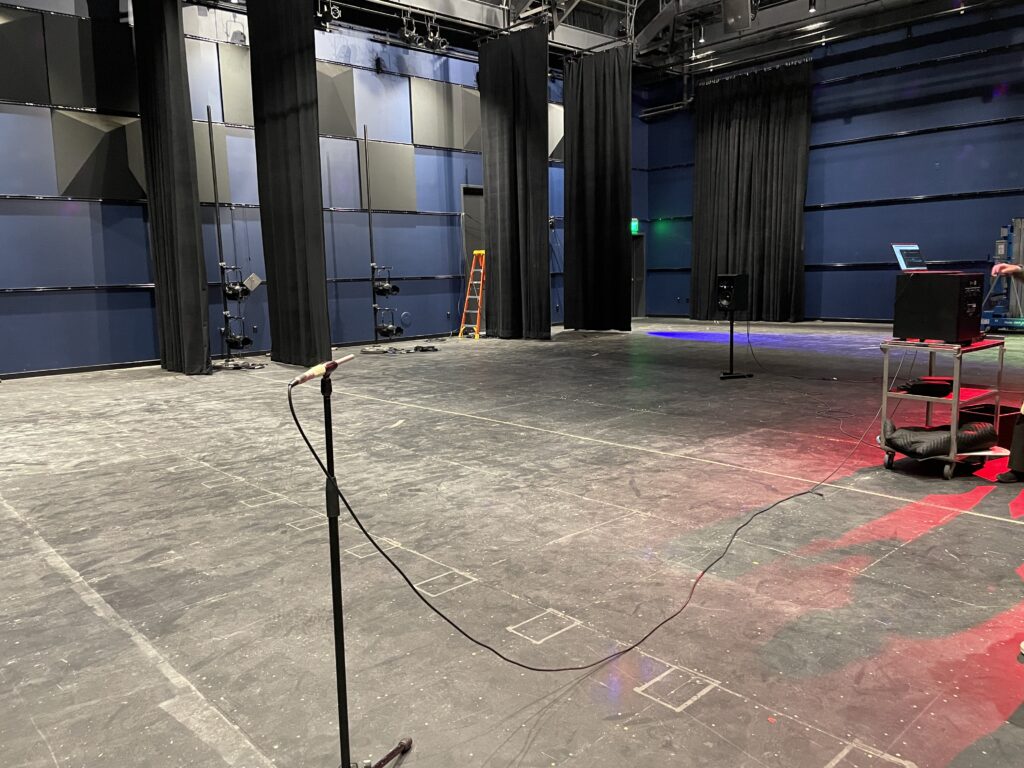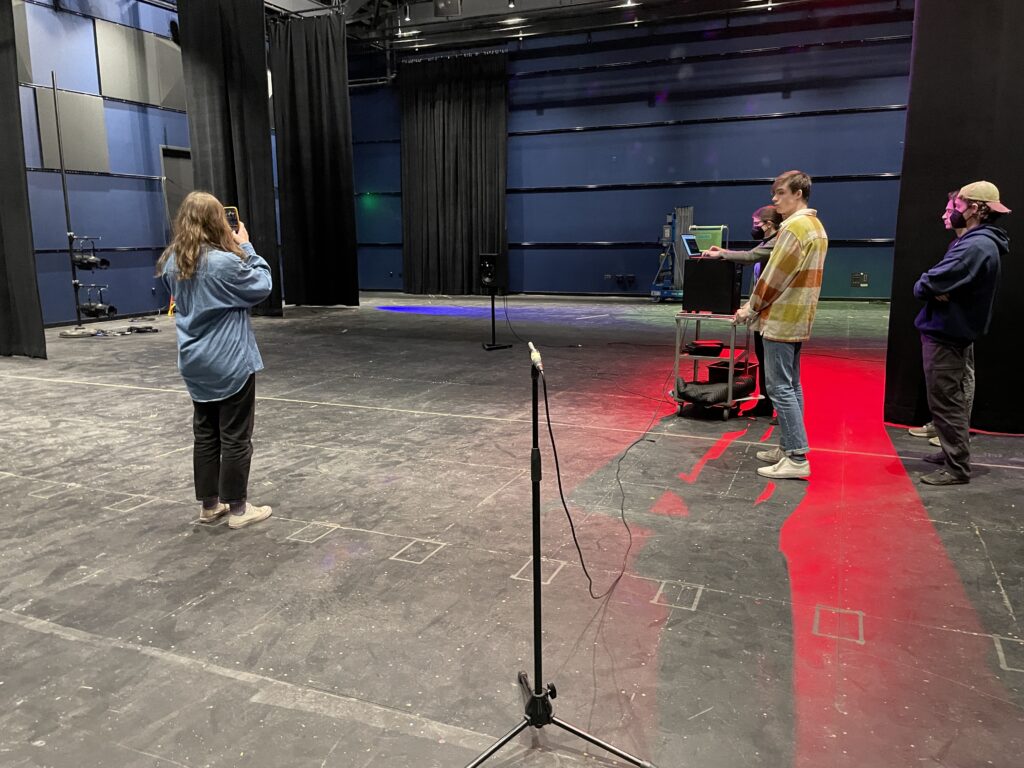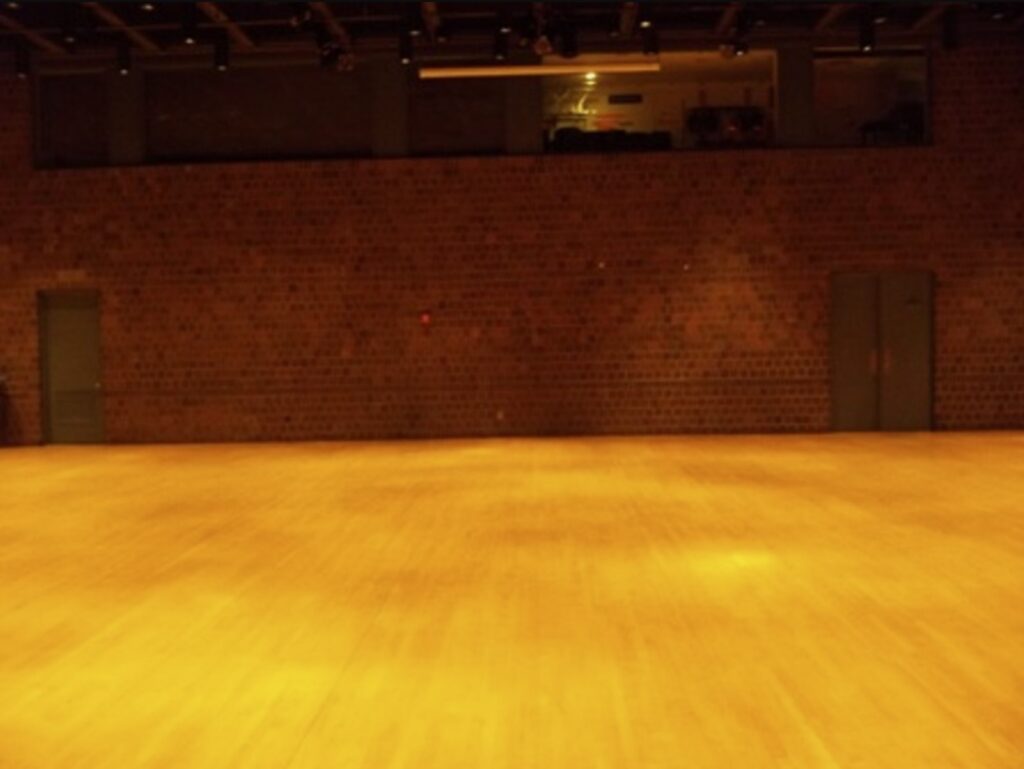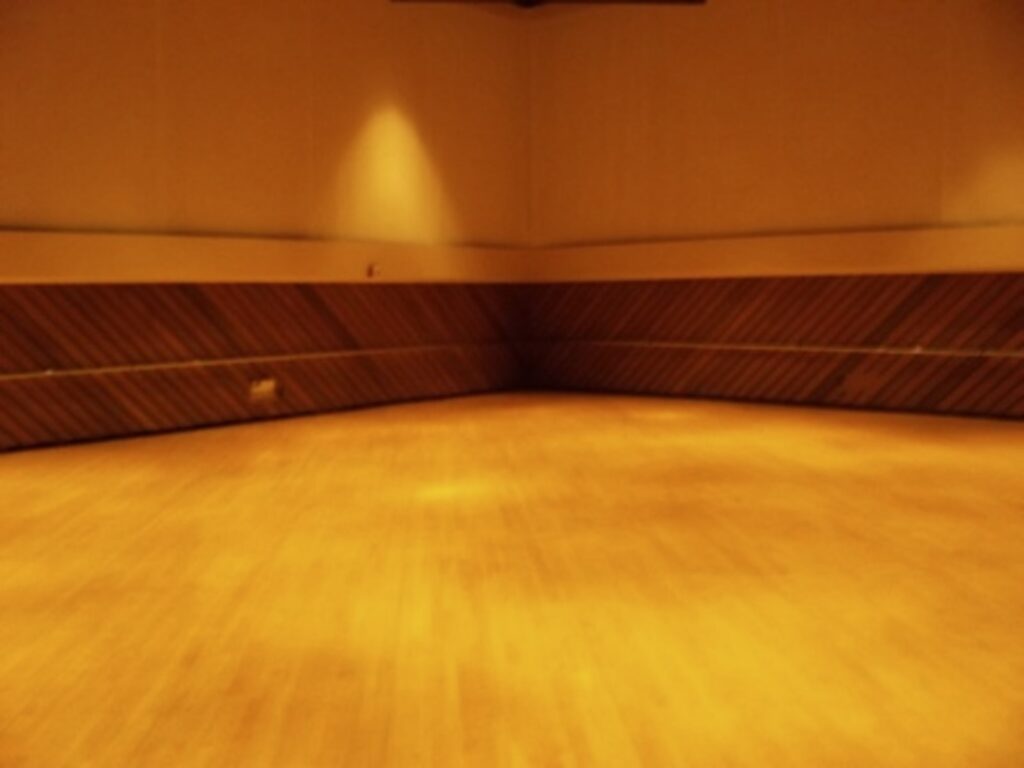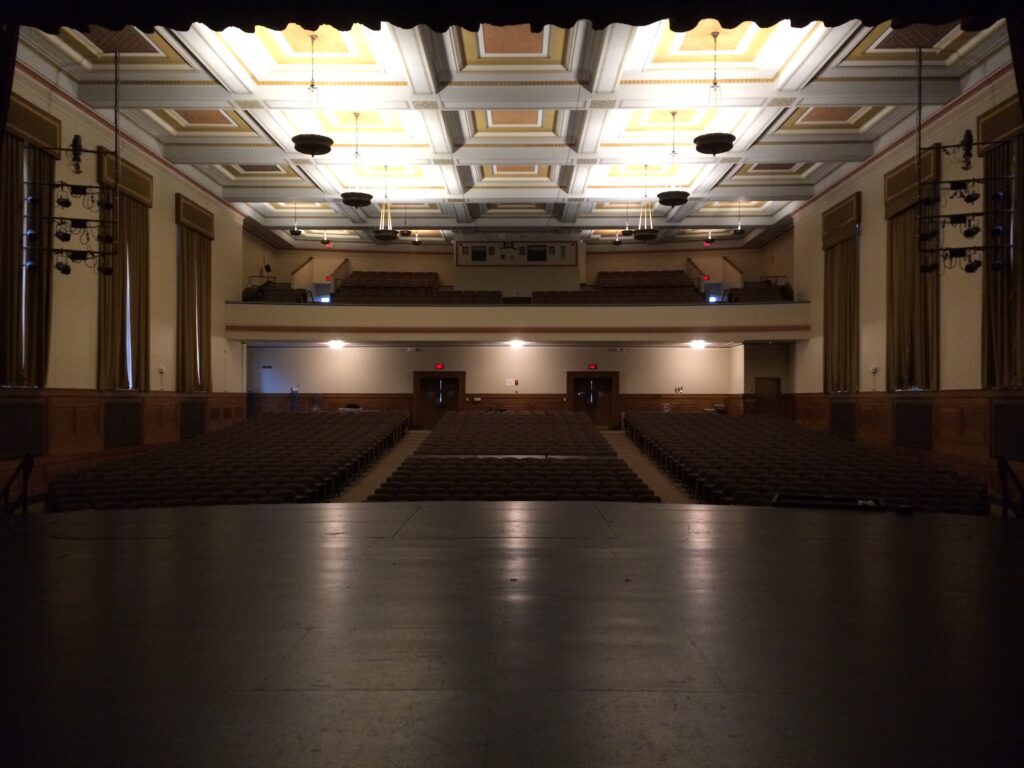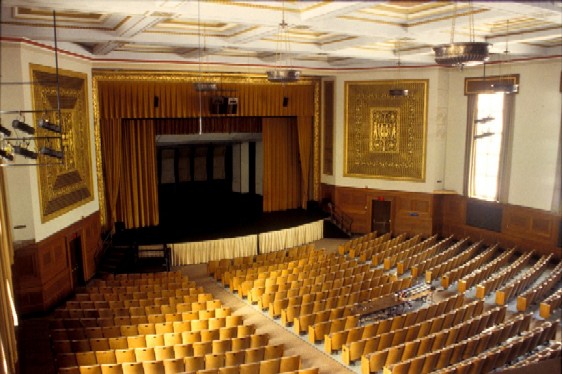Dylan Edelman, Sydney Haupt, Geoffrey Kulp, J Max Morris, Seth Roberts, Joey Willenbucher, Yongyi Zang
Abstract
Our project asks the question, “are performing ensembles at the University of Rochester choosing the right venue for their performances, and is there a way to streamline the room selection process?”
By combining room properties and acoustical characteristics of the Sloan Performing Arts Center, Strong Auditorium, May Room, and Interfaith Chapel, we have built a quiz to answer that question. Users are asked to answer questions about performance type, dry/wet sound, room capacity, piano, and PA system before being presented with the room that best suits their needs, as well as a ranked list of the next best options. Users can then browse information on each venue and listen to either speech or music convolved with an impulse response to get a better sense of how their ensemble will sound in the space.
This project was successful in presenting technical acoustic information in an easily-accessible way, confirming the optimal use-case of several campus performance venues, and demystifying the room selection process.
Procedure
For acoustic measurements, we obtained impulse responses in each of the four performance locations. We measured the Sloan impulses ourselves and then obtained previously recorded impulse responses for the other spaces. The process for recording the Sloan impulse responses was:
To get the impulse responses from Sloan, we brought a portable recording setup into the theater. This included a loudspeaker, microphone, audio interface, and necessary cables. These were used to run a sine sweep and measure the room’s response. The loudspeaker would output the sine sweep and the microphone was used to record the room’s response. The interface was used to output the sweep to the speaker and get the input from the microphone. Once a measurement was taken, we used MATLAB to process the information and generate an impulse response.
We set up the microphone where the audience would normally sit and the loudspeaker where the performers would normally be. For each location, we moved the microphone and receiver to multiple locations to help get a better sense of the space. There were four source locations which we labeled as center, left, back, and back left, and two receiver locations which we labeled as center and left. The left receiver location was only used with the source center and back locations, and the center receiver location was used with all of the source locations, giving us 6 total location pairs. For each of the location pairs, we ran two takes to ensure our measurements were accurate.
We specifically chose a day to take the measurements of Sloan when no productions were occurring. This meant that there were no set pieces or props present that would affect our results; ourselves and the measurement equipment were the only things present that would not normally be in the space.
Findings at a Glance
| Recommended Performance Type | Room Capacity | Dry or Wet | Piano | PA System | |
|---|---|---|---|---|---|
| Sloan Performing Arts Center | Theater | 375 | Dry | No | Yes |
| May Room | Music, Theater | 260 | Dry/Wet | Yes | Yes |
| Interfaith Chapel | Speech, Music | 190 | Wet | Yes | Yes |
| Strong Auditorium | Music | 967 | Wet | Yes | Yes |
Sloan Performing Arts Center
Recommended Use: Music, Theater, Speech
How it has been used in the past: Theater, Musical Theater (Rock)
| Decay Time (T20) | Clarity (C50) | Room Capacity |
|---|---|---|
| 0.95 s | 0.9891 | 375 |
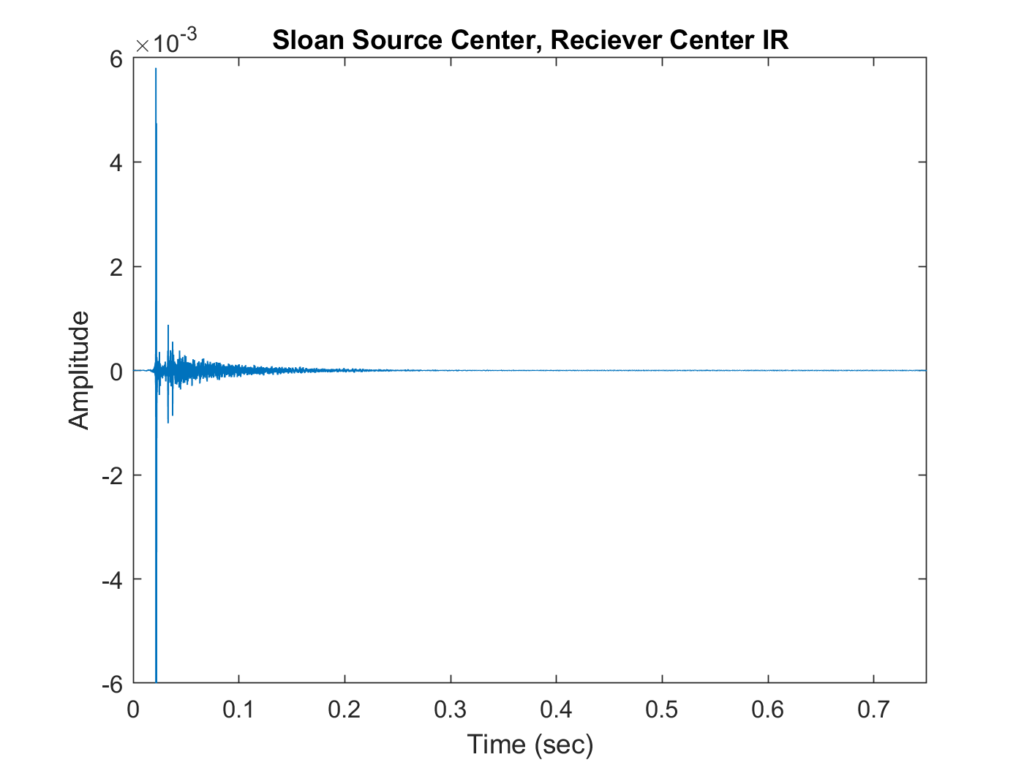
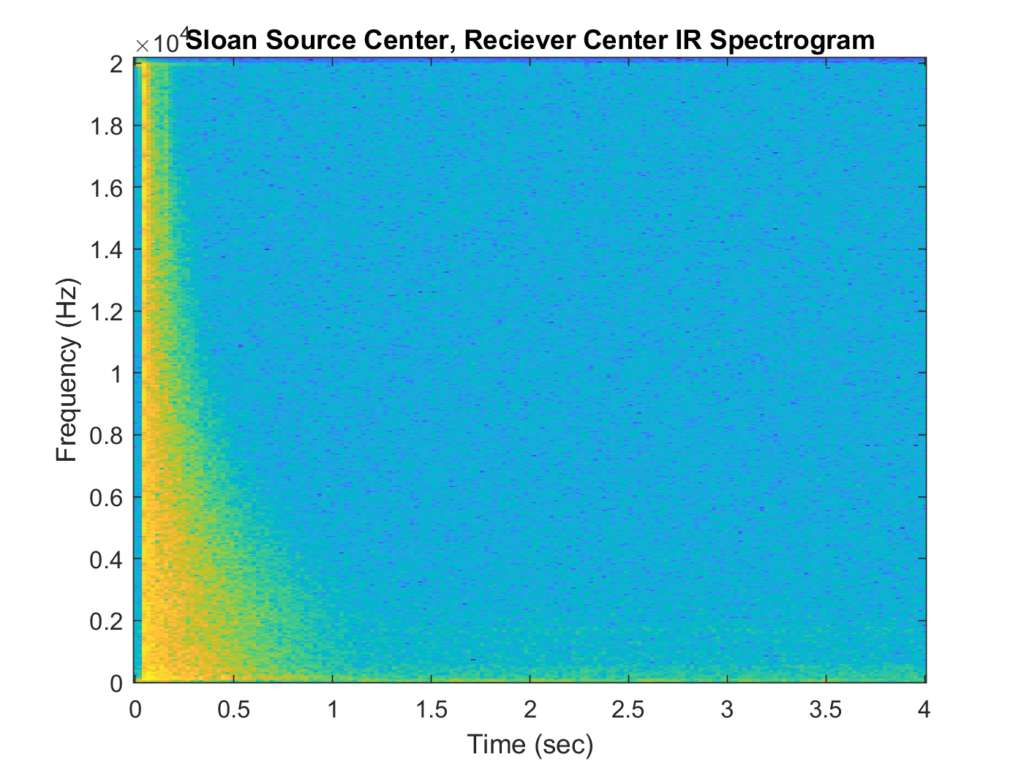
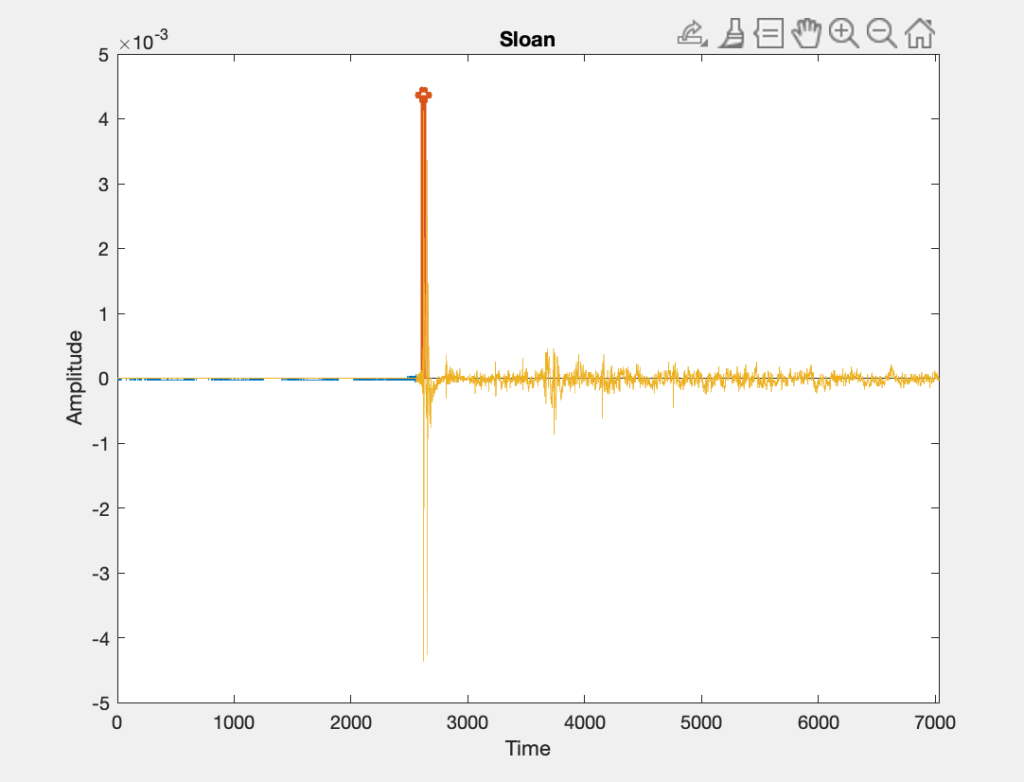
May Room
Recommended Use: Music, Theater, Speech
How it has been used in the past: Music (Classical, Rock), Theater, Musical Theater
| Decay Time (T20) | Clarity (C50) | Room Capacity |
|---|---|---|
| 1.33 s | 3.6452 | 260 |

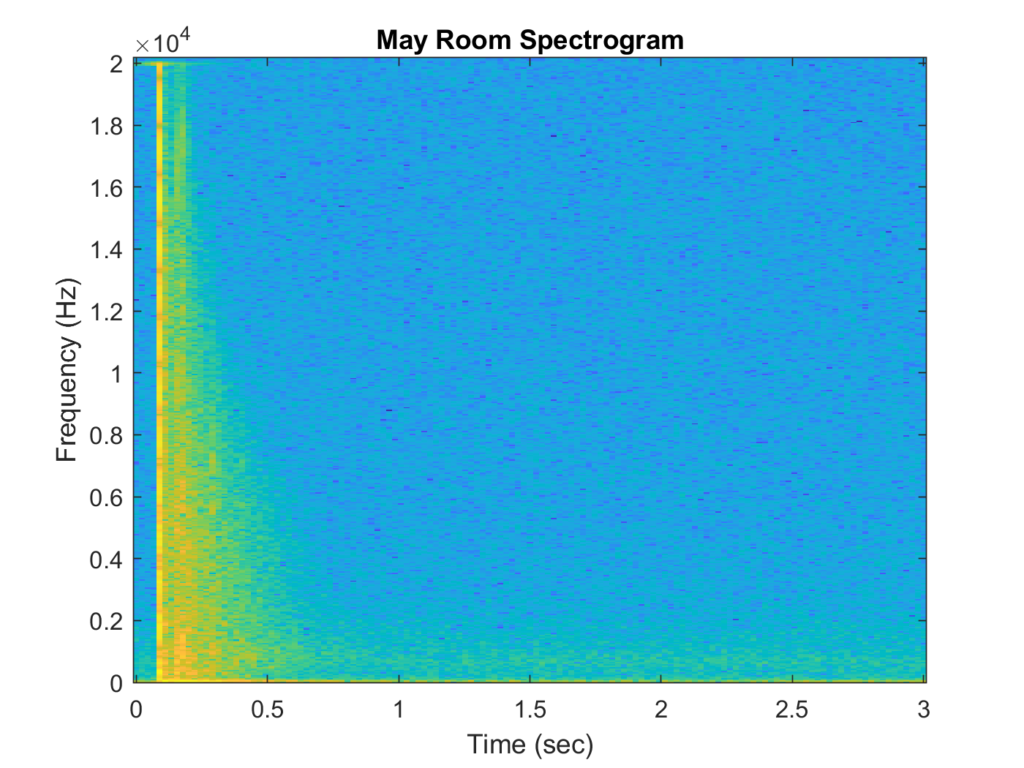
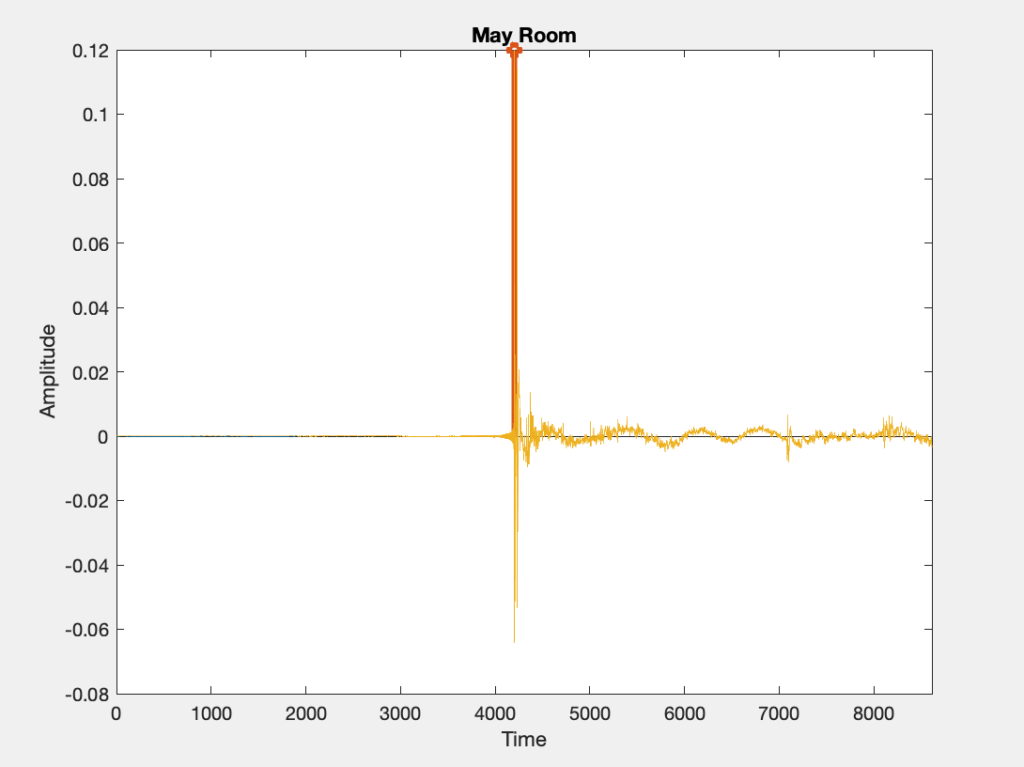
Interfaith Chapel
Recommended Use: Music, Theater, Speech
How it has been used in the past: Religious Service, Speech, A Cappella, Piano, Organ
| Decay Time (T20) | Clarity (C50) | Room Capacity |
|---|---|---|
| 1.87 s | 1.0239 | 190 |
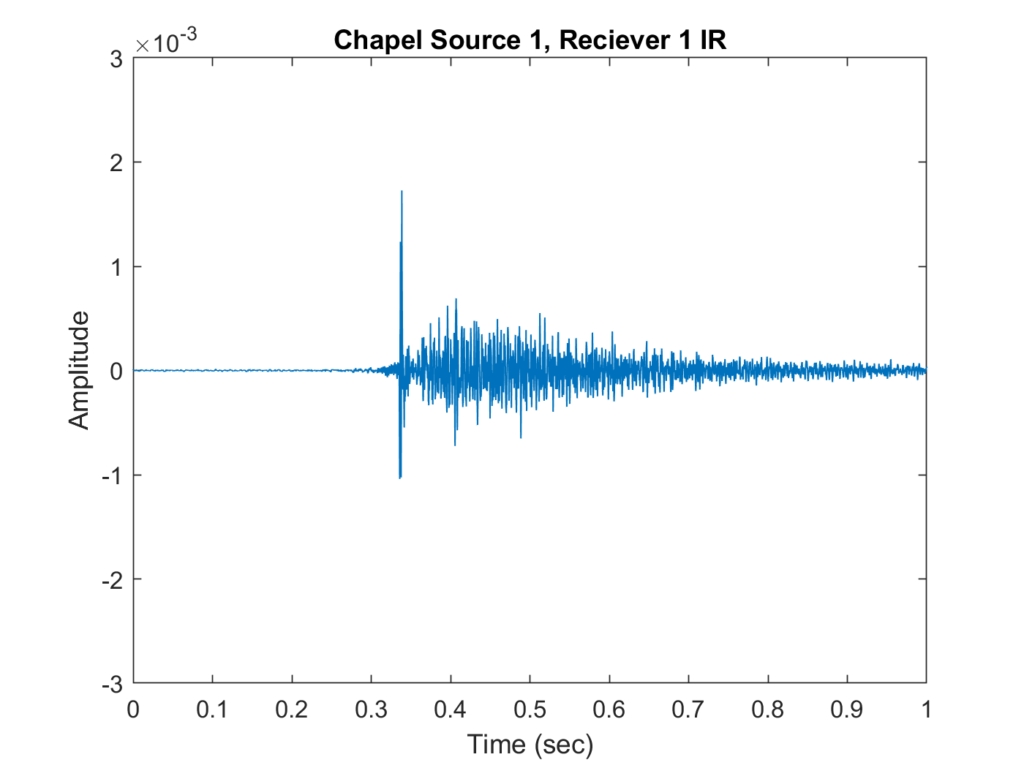
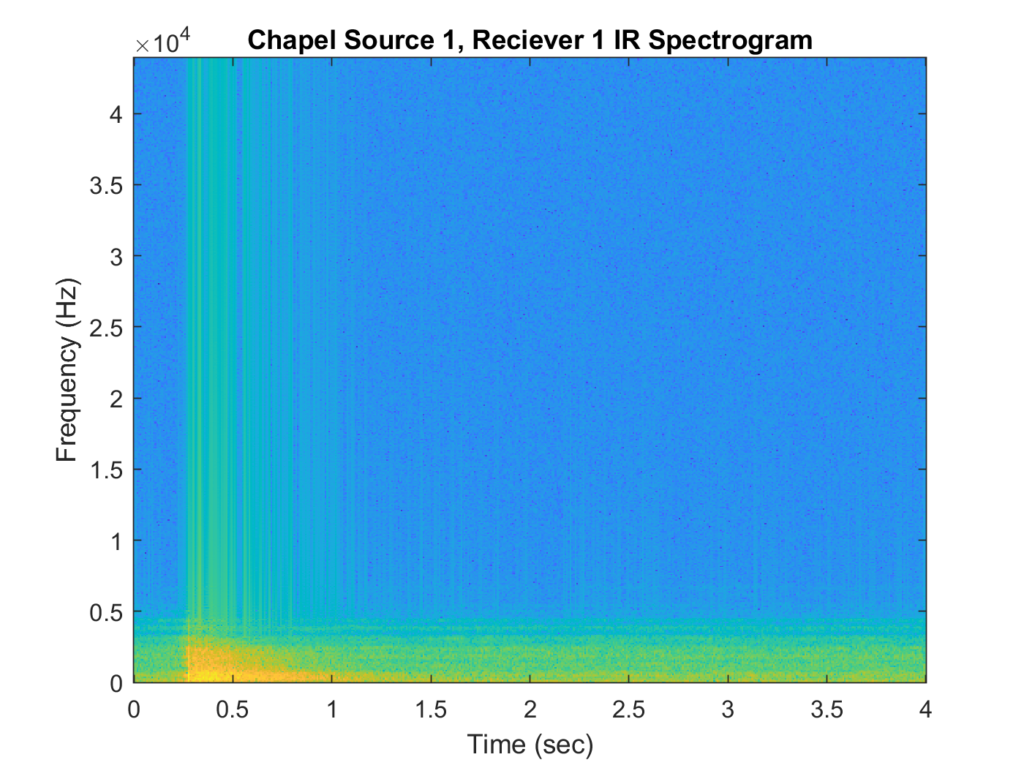
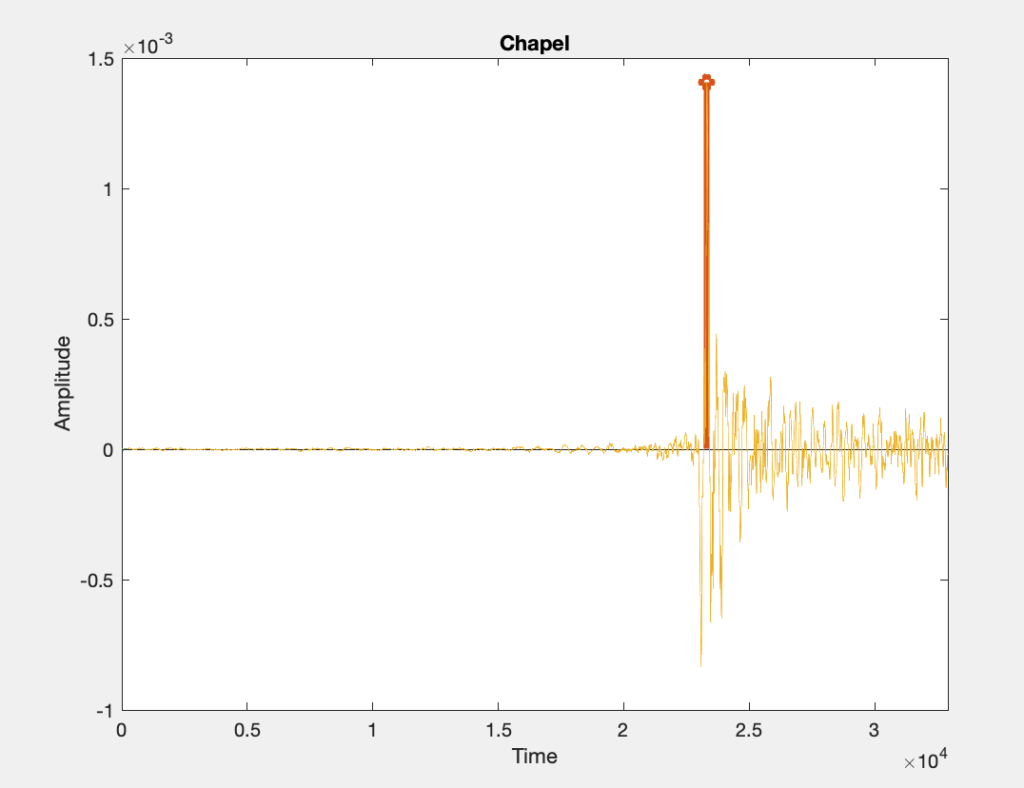
Strong Auditorium
Recommended Use: Music, Theater, Speech
How it has been used in the past: Music Ensembles, Speaker, Theater
| Decay Time (T20) | Clarity (C50) | Room Capacity |
|---|---|---|
| 1.63 s | 8.6048 | 967 |


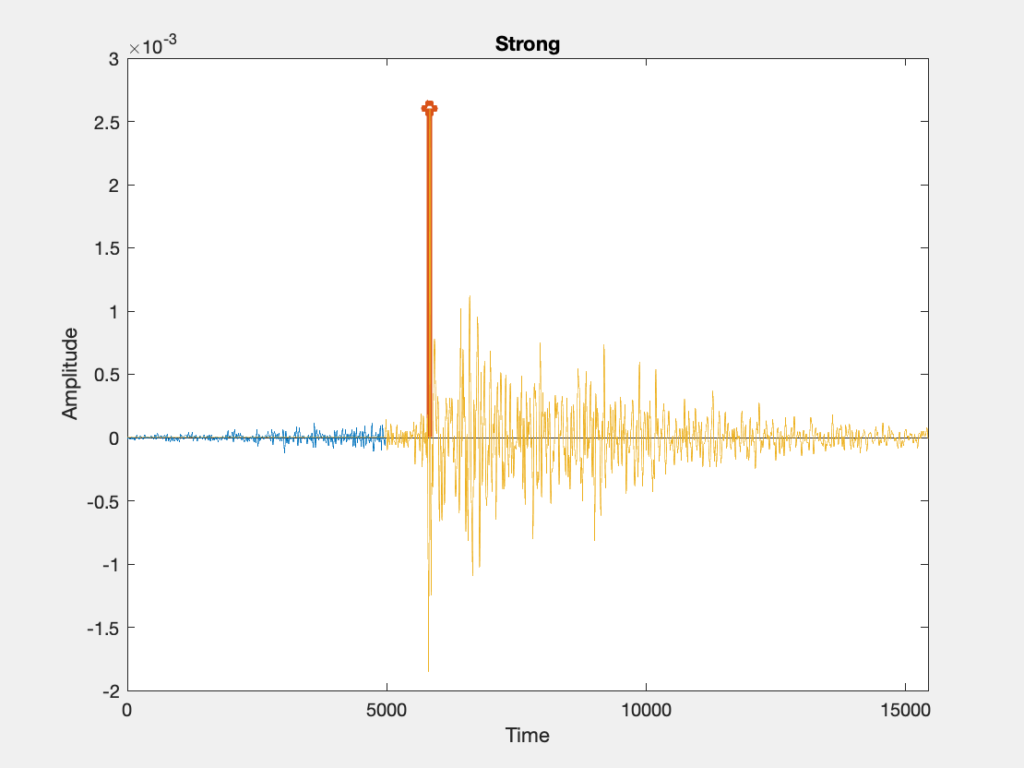
Results
Analysis of our impulse responses show that T20 is greatest for the Chapel, then Strong, May Room, and finally Sloan Performing Arts Center. These results make sense compared to a qualitative appraisal of the sound qualities of each space. The Chapel has a more wet sound and reverb, and Sloan, as a black box theater, is relatively dry in comparison. Clarity ended up being highest for Strong followed by May Room, Chapel, then Sloan. This is an unexpected result since a higher clarity corresponds to a space better suited for speech. Since Sloan is a dryer space used for theater it was expected to have the highest clarity, but it ended up being in third. Strong is also much larger than the May room so it is surprising that its clarity is larger.
The conflict between our clarity results and T20 results makes it inconclusive whether each room is better suited for speech or music. However, our results do roughly support the fact that each space can be used for either speech or music.
For a more conclusive result, we would need to assess more spaces on campus and obtain a more consistent impulse response for each.
We ended up encountering issues with the impulse responses we were given. While exporting files there were a few impulse responses, namely Strong’s and the Interfaith Chapel’s, which had significant quantization noise due to unmatched bit-rates. We ended up applying a high-pass filter and cutting off the last portion of the sound to help achieve more accurate analysis results. This ended up resulting in a muffled sounding IR and convolution for these spaces. Furthermore, a balloon pop was used in Strong and the Chapel, while a sine sweep was used in Sloan and the May Room, further increasing inconsistency.
Citations
“Overview,” About Us: The Interfaith Chapel: University of Rochester. [Online]. Available: https://www.rochester.edu/chapel/about/index.html
“”The Sloan Performing Arts Center,” University Advancement: University of Rochester [Online]. Available: https://www.rochester.edu/advancement/the-sloan-performing-arts-center/
“Strong Auditorium,” Locations : Event and Classroom Management : University of Rochester. [Online]. Available: https://www.rochester.edu/college/ecm/locations/strong.html. [Accessed: 04-May-2022].
“Wilson Commons,” Wilson Commons Student Activities: Student Life Spaces. [Online]. Available: https://rochester.edu/college/wcsa/student-life-spaces/wilson-commons.html. [Accessed: 04-May-2022].
Event and Classroom Management, University of Rochester. Upper Strong – Stage (Locations) [Online]. Available: https://www.rochester.edu/college/ecm/locations/location-photos/strong-upper-b.jpg
Event and Classroom Management, University of Rochester. Upper Strong – Audience (Locations) [Online]. Available: https://www.rochester.edu/college/ecm/locations/location-photos/strong-upper-a.jpg
International Theatre Program, University of Rochester. Todd Theatre Images [Online]. Available: https://www.sas.rochester.edu/theatre/resources/todd-images.html
The Interfaith Chapel, University of Rochester. Reservations [Online]. Available: https://www.rochester.edu/chapel/reservations/index.html
G. Pirker, M. Wohlmayr, S. Petrik, and F. Pernkopf, “A pitch tracking corpus with evaluation on multipitch tracking scenario,” Interspeech 2011, 2011.
Strong , chapel IRs courtesy of: https://acousticsportfolio.digitalscholar.rochester.edu/alex-alex-jiwei/
May room IRs courtesy of: https://acousticsportfolio.digitalscholar.rochester.edu/projects/acoustics-a-cappella-preference/

